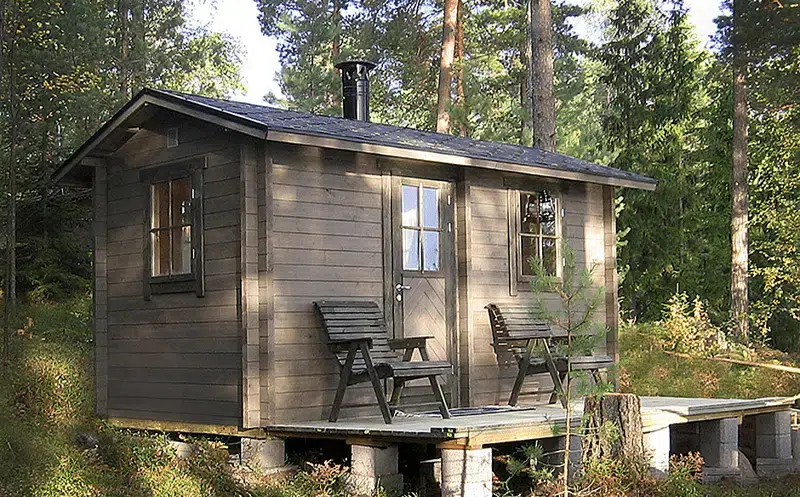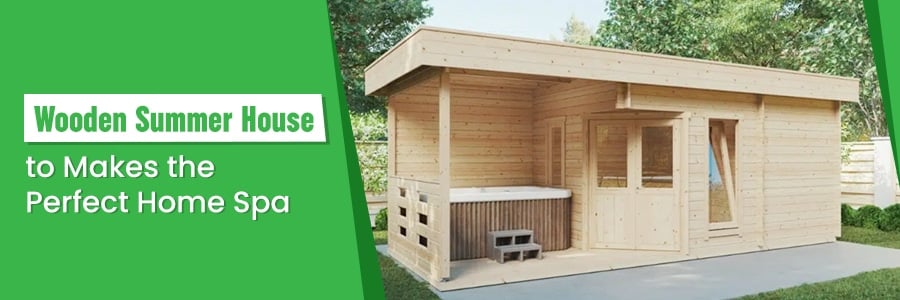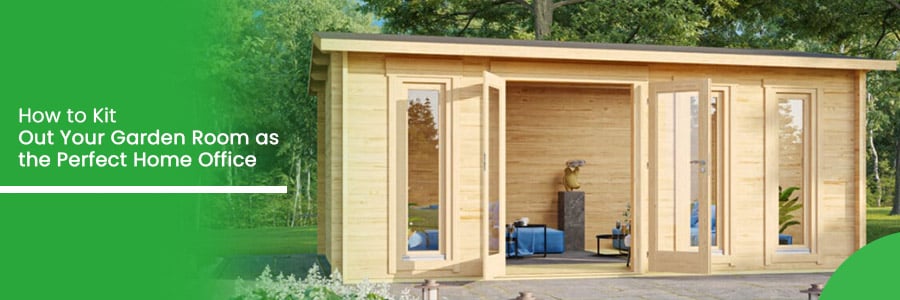A Short History of Log Cabins
01.12.2018
Log Cabins have not always been as popular as they are now. During past centuries it seems that it was more important to possess a “modern house” whatever that meant during the respective period. It seemed more important to make an impression with a house that aimed at looking most expensive than having the comfort and cosiness at mind that a log cabin can offer its inhabitants.
The conscious abstinence from status symbols and the tendency to prioritize one’s own needs, wishes, and individual lifestyle is a more recent development indicating strong characters who know who they are, and are perfectly able to also show themselves without the need of presenting their lifestyles as a show of wealth.
Before these modern times, however, log cabins have already long been very popular as main houses for a variety of reasons as for example:
- Cosy living in a thermally very well-balanced interior climate
- Building material was readily available especially in woody areas
- Easy and quick construction
- Therefore the size of the log cabins was nearly unlimited, and they could reach huge dimensions with several storeys of height.
The Earliest Proofs of Log Cabins
The oldest archaeological find of log cabins is at the Federsee in Upper Swabia in Germany. They were erected between about 2800 to 2500 BC. However, it is believed that their origins date back into the Bronze Age at about 3500 BC.
The Roman architect Vitruvius Pollio described log cabins in today’s north-eastern Turkey, at the time a Roman province called Pontus.
The oldest log cabins still standing are from the Middle Ages like the oldest log cabin in Europe that seems to be in Switzerland, and it was erected in 1287 AD.
The construction principle has remained the same during all the centuries: Logs were stacked horizontally over one another and fixed with wood joints at the corners. Gaps were filled with chips, mud, moss and other materials, and while straight round logs were preferred, already quite early on logs were also hewed to fit together or to fit a certain width to construct walls with a constant wall thickness. In modern log cabins the logs are often fixed together by tongue and groove connections.
An Evolution in the Construction of Log Cabins Can be Found in the Corner Joints
Construction of log cabins has nearly everywhere undergone an evolutionary process by further sophistication of corner joints to secure the logs in different directions. Different methods of corner timbering in round logs as well as in hewed logs have always been employed with local traditions. Using squared logs with double-notch joints with the logs extending beyond the corners was a more sophisticated method of corner construction.
Building floors and lower walls from stone to keep the logs away from the moisture in the ground or even cellars from stone were other ways to make log cabins more sturdy and useable, and building log cabins of two or even three storeys finally made them huge buildings suitable to house businesses, churches, or hotels.
From Northern Europe to Northern America and Canada: Log Cabins were Popular in Cold Climates
Scandinavian and German settlers are said to be the first to bring log cabins to Northern America and Canada. Historical proof shows log cabins as early as 1638. Everywhere in wooded, northern areas, building log cabins seemed to be the method of choice. After all, you had to fell trees to get an open area for the house, and what could suggest itself better than just using these very logs as a building material that would give rise to a house with a formidable thermal insulation?
The first log cabins built by settlers are said to have been in the Brandywine and Delaware River valleys by Finnish Settlers. This settlement later ended up to be called “New York”, and by that time this log cabin building style had been adopted by British settlers as well. A historic marker still shows the site were Stephen Ketchum settled in his log cabin in 1792 in Greene, New York.
Nowadays Still as Important as Ever: Log Cabins Need the Right Location
From historical log cabins to modern inhabitable log cabins as primary residences, as weekend or holiday cottages, or as garden rooms, garden offices and all the plethora of modern time usages have all one need in common to be truly long living, and that is a well drained location.
Sunlight surely was a big plus in historical northern building sites as well as good drainage to keep the moisture away from the logs forming the lower parts of the walls.
Selection of the best logs from old, straight growing trees with few limbs for the log cabins themselves reduced the need for hewing, while other trees could be used for fencing, stables, barns, or other farm buildings.
Due to different styles for example in the corner notching, but also in roofs, and fitting in windows and doors, several building traditions developed in different parts of the world, like for example in different parts of Northern America or Scandinavia.
Needless to say that modern-day customers of log cabins enjoy the best of all worlds purchasing their log cabins from traditional manufacturers in one of the countries with a long tradition of building log cabins.
For any questions, please contact us or call Oliver at 020 3807 0369!
Categories:
BlogWant to discuss over phone. Let us call back to you
If you need any additional info regarding any product, please fill in the below form and we will get back to you, usually the same or next working day.
Have any questions regarding some product?
If you need any additional info regarding any product, please send us your questions.




